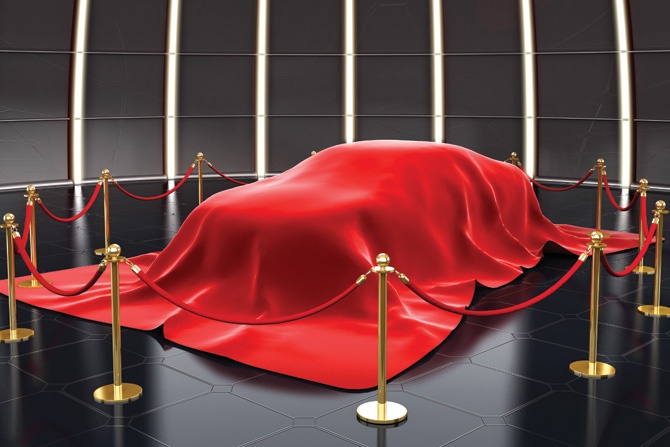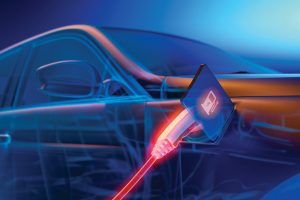Thomasnet.com recently listed the leading car manufacturers in the U.S. according to Q3 2020 market share during the beginning months of the COVID-19 pandemic. The manufacturers are listed below by market share:
- General Motors (16.88%)
- Ford Motor Company (14.29%)
- Toyota Motor Company (13.87%)
- Fiat Chrysler Automobiles (12.62%)
- Honda Motor Company (9.27%)
- Hyundai Kia Auto Group (8.41%)
- Nissan Motor Company (7.13%)
- Subaru Corporation (4.17%)
- Volkswagen Group (3.76%)
- Daimler (2.19%)
- Tesla (2.19%)
- Mazda (1.94%)
- BMW Group (1.92%)
After the list was compiled, FCA and PSA Group merged and were renamed Stellantis. PSA Group was the parent company of several French brands that are currently unavailable in the U.S. The combined brand list includes 14 brands, such as Chrysler, Fiat, Jeep, Ram, Peugeot and Citroën. Stellantis is currently the fourth-largest global automobile manufacturer, and it has plans to bring at least one brand, Peugeot, back to the U.S. as early as 2026.
The following is a brief review of what you should know about innovations introduced in the 2022 models for each manufacturer listed above. Sections are alphabetical.
BMW Group
In Munich, the BMW Group has been working on hydrogen technology for more than 40 years and hydrogen fuel cell technology for more than 20 years. The goal is to use energy from hydrogen instead of high-voltage batteries to power an electric drive train. The next step in the plan is to install essential components from the hydrogen-electric drive train in the fuel cell system, which will then be installed in the BMW i Hydrogen NEXT from 2022.
Hydrogen is a promising green technology because hydrogen fuel cells have only one by-product: water vapor. But many hurdles are ahead, such as a hydrogen filling infrastructure and the ability to provide drivers with enough hydrogen at a low enough price point for the technology to be adopted. Nevertheless, many industry experts think hydrogen fuel cell vehicles will become a viable alternative to electric drive trains powered by high-voltage batteries.
Daimler
Daimler is in the middle of two big pushes: converting to exclusively green electricity in its manufacturing plants and shifting to an all-electric fleet by 2030. Mercedes-Benz now has battery electric vehicles for every segment served by the company. Starting in 2025, the company will only launch electric vehicles. This effort will involve a huge R&D effort; between 2022 and 2030, the company plans to spend more than €40 billion on battery electric vehicles. The first products to be electrified are the most iconic: the F-150 truck, the Mustang and the Transit.
Ford Motor Company
Between May 2021 and the end of 2025, Ford plans to invest $22 billion in electrification, focusing on the areas where the company is strongest. The company is especially focused on fully electric pickups and vans. The strategy involves accessible price points, lower ownership costs and improved productivity. When it makes sense, Ford is also investing in other automakers such as Rivian.
Ford is proud of its public charging network (the largest in North America), 2,300 EV-certified dealers, and 644 EV-certified commercial vehicle centers. Ford’s move toward autonomous driving includes:
- An infotainment program called Sync
- New technologies in the Driver Assist Package such as automatic high beams, blind-spot and cross-traffic alerts, heated steering wheels and windshield wipers that detect rain
- Enhanced parking assist
- Adaptive cruise control
General Motors
General Motors has a large number of new or refreshed vehicles for 2022. New or refreshed models are divided into three categories: EVs, sporty luxury sedans and trucks. Six vehicles offer Super Cruise, a move toward autonomous driving that includes the following abilities:
- Driving hands free while towing objects such as boats or campers
- Signaling and starting lane changes at the optimal time
- Showing available hands-free routes on the Google Maps app during route selection
Super Cruise is available on:
- Cadillac CT4
- Cadillac CT5
- Cadillac Escalade
- Chevrolet Silverado
- GMC Hummer EV Pickup
- GMC Sierra
Honda Motor Company
Honda just released its 11th generation and No. 2 U.S. seller, the 2022 Civic. (No. 1 is the CR-V.) Honda plans to have 40% of its sales consist of electrified vehicles with zero emissions by 2030, 80% by 2035 and 100% by 2040.
In late 2020, Honda and General Motors signed a memorandum of understanding. The agreement will allow Honda to use General Motor’s Ultium batteries and share vehicle platforms. Honda plans to have its first vehicles based on the e-Architecture platform by the 2024 model year.
Hyundai Kia Auto Group
In May 2021, Hyundai Motor Group committed to investing $7.4 billion in the U.S. by 2025. The goal is to produce EVs, improve production facilities, invest in smart mobility solutions and sell American-made electric vehicles to U.S. buyers, starting in 2022.
Hyundai is interested in hydrogen fuel cell technology and has signed a memorandum of understanding about the U.S. hydrogen ecosystem with the U.S. Department of Energy and some of its business partners. They want to work on hydrogen fuel cell technology and install a hydrogen refueling station. A previous agreement with Cummins Inc. is intended to accelerate the use of fuel cell electric systems in the U.S.
The company’s technology flagship is the 2021 NEXO Fuel Cell SUV, currently available only from select California dealers. The NEXO is the world’s first dedicated hydrogen-powered SUV.
Mazda
In June 2021, Mazda announced an electrification strategy, new hybrids and new plug-in hybrids. The electrification strategy includes a dedicated EV platform scheduled for 2025. The models to be launched by 2025 include five hybrids, five plug-in hybrids and three all-electric vehicles. The new platform is formally called the Skyactiv Multi-Solution Scalable Architecture platform. Smaller vehicles will use transverse power units (usually found in front-wheel-drive cars), and larger vehicles will use longitudinal power units (usually found in rear-wheel-drive cars).
From 2025 to 2030, Mazda plans to use the EV-specific Skyactiv Scalable EV Architecture in additional EV models. By 2030, Mazda intends to have a lineup that will include a minimum of 25% EVs.
Nissan Motor Company
Nissan has not gotten specific about its upcoming new electric vehicles, but it does continue to sell the Leaf EV and the Ariya. Its e-Power hybrid technology generates electricity from a gasoline engine for the powertrain, which has an electric motor. And it offers features such as a concierge, voice integrated technology to perform tasks such as locking the vehicle’s doors or starting the engine, and the ability to make your vehicle a WiFi hotspot.
Nissan has been building trucks for more than six decades. It is committed to its truck lineup. In July 2021, a Nissan manufacturing factory in Mississippi began building the 2022 Nissan Frontier. The manufacturing facility uses collaborative robot (called cobot) technology to assemble the Frontier. Benefits include increased safety, reduced strain on employees, higher product quality and increased efficiency as the factory operates.
Stellantis
In July 2021, Stellantis CEO Carlos Tavares announced its upcoming €30 billion five-year investment in electrified vehicles. Sales of its plug-in hybrids and battery-electric vehicles in North America is currently 4%. By 2025, Stellantis plans to have 40 BEVs and 15 plug-in PHEVs for sale in showrooms worldwide. The sales goal for electrified vehicles by 2030 is 40% in North America and 70% in Europe.
The Jeep Wrangler 4xe debuted in April 2021 and was soon responsible for 20% of Wrangler sales. The unexpectedly large success surprised company officials.
The Jeep brand CEO, Christian Meunier, says Jeep is committed to zero emissions. By 2025, Jeep plans to have a 4xe version for every product.
Subaru Corporation
In December 2020, Subaru announced a battery-electric SUV. (They released the name later.) The new SUV will be called the Solterra, is a compliance vehicle for the California market and will be sold in the U.S. market starting with the 2023 model.
Subaru sells 66% of its cars in the U.S., which is why the Solterra will be released in the U.S. first. In early 2021, Subaru said it plans to offer electrification on all of its models by 2025. Besides the Solterra, Subaru has not offered specifics about the mix of hybrids, plug-in hybrids or EVs.
Tesla
Tesla has not been specific about its upcoming offerings, but the company just updated the Model S and added a high-performance Plaid version. There has also been some discussion about a pickup truck and second-generation roadster.
According to Nathan Dyer on the CARHP website on Aug. 3, 2021, the 2022 Model 3 will have a price that is $8,000 less than in 2021, and Tesla has replaced the 2022 sedan’s lithium nickel cobalt aluminum oxide (NCA) battery with a lithium iron phosphate (LFP) battery. The change should boost efficiency and performance.
Toyota Motor Company
Toyota has long specialized in utilitarian hybrid powertrains, but it has redesigned the Mirai as a hydrogen fuel-cell-powered car. The Mirai uses a rear-wheel-drive Lexus platform and has an estimated range of 402 miles. At $49,500, the Mirai costs about $9,000 less than the previous model.
All of the U.S. hydrogen filling stations are in California, but Toyota and Shell are working together to increase the nation’s hydrogen station infrastructure by building more.
Toyota now has an e-TNGA BEV-dedicated platform. It is using the new platform for the Toyota bZ4X Concept, but it is still focusing on mainly selling hybrids in North America. The plan between now and 2025 is to add additional electrified options for a variety of models. They will be either hybrid or plug-in hybrids.
The first Toyota bz4X models are scheduled to reach showrooms sometime during the middle of 2022.
Volkswagen Group
The Volkswagen Group has 12 brands: Volkswagen, Audi, SEAT, ŠKODA, Bentley, Bugatti, Lamborghini, Porsche, Ducati, Volkswagen Commercial Vehicles, Scania and MAN. Some are global, some have niche markets, and some are not sold in North America. Volkswagen U.S. sales are less than those for Toyota, Ford, and GM. Its current bestsellers, according to goodcarbadcar.net, are the Jetta sedan and the Tiguan crossover.
Volkswagen is currently transforming itself into an EV manufacturer, with plans to launch 70 EVs and 60 HEVs by the end of the 2020s. It is investing €11 billion before 2024. The Volkswagen ID.4, a small electric SUV, is the most recent addition. Two models from other company brands, the Audi E-Tron GT and the Porsche Taycan EV, are built on the same platform. Bentleys are scheduled to be hybrid or electric plug-ins by 2026. Lamborghini has not yet talked much about electrification plans.
As the market shifts toward autonomous driving, the Volkswagen Group is shifting away from selling cars and moving toward selling software and mobility services. The company is also working on battery technology, including recycling and charging infrastructure.
Volkswagen has designed an augmented reality head-up display that projects information onto the windscreen based on two fields and two levels. The far-range window is larger than the close-range window, which is underneath the far-range window. Engineers have designed the displays so they won’t overwhelm drivers.










